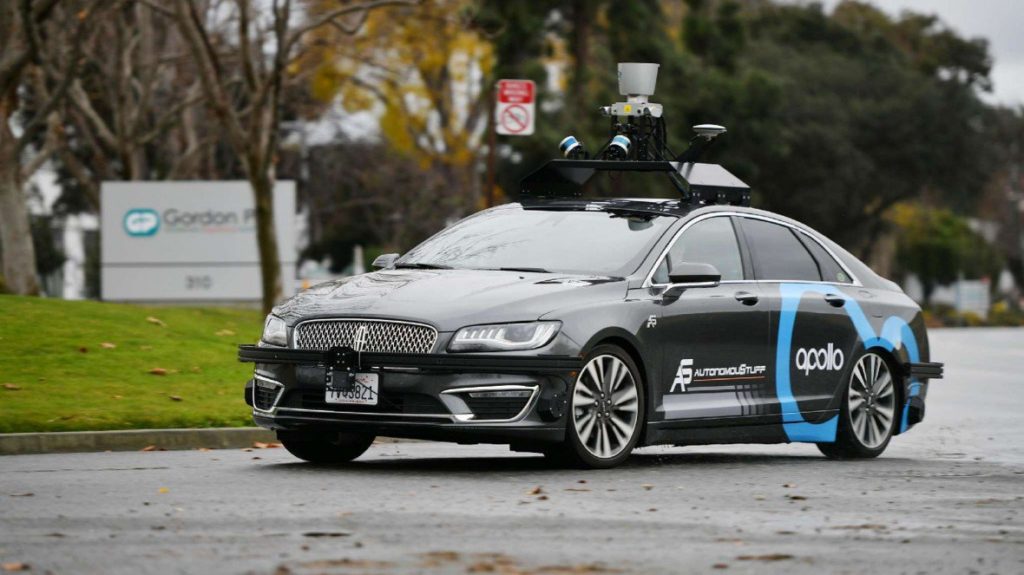Baidu’s Autonomous Cars Have to Be Taken Over by Humans Every 41 Miles
This post comes courtesy of our content partners at TechNode.
Baidu and other autonomous driving technology developers testing vehicles on public roads in California have had to release more details as to why their cars “disengaged” from autonomous control.
A disengagement is when the human driver testing the car has to take over from the automated system or when the system itself simply fails. The consumer rights organization Consumer Watchdog has claimed the eight reports “further confirmed that self-driving cars cannot actually drive themselves.”
After all 20 licensed companies submitted their reports to California’s Department for Motor Vehicles (DMV) for 2017, the agency published the findings in February. The reports included the amount of driving a company has done and why their systems were disengaged. Eight companies, including Baidu USA LLC and Waymo, were found to have provided too little information into why these disengagements happened. The companies have now resubmitted their reports and have provided far more detail which makes for uncomfortable reading.

Looking at Baidu’s mileage, its cars drove a total of 1,971.74 miles (3,173km) on California’s roads between Aug 31, 2016, and Nov 30, 2017. There were a total of 48 disengagements, meaning one for every 41 miles (66km). Of the 1,971 miles driven, 1,323.78 were driven in November 2017 alone, with 9 disengagements. Remove this month from the figures and the disengagements rise to one every 16.6 miles (31.6km).

GM’s Cruise, on the other hand, reported disengagements once every 4,600 miles and Waymo reported an incident once every 5,555 miles for its cars which drove 2 million miles last year.
The new level of detail in reporting of disengagements required by the DMV shows the problems the systems are having. Rather than unusual road conditions or events, the faults are with the software and perception sensors struggling to make sense of everyday things such as parked cars.
For example, Baidu’s initial report gave the example of “Disengage for unwanted maneuver” which turned out to be “Delayed perception for pedestrian running into the street” in the new report. “Disengage for planning discrepancy” became “Undesired planning near large bush on right caused braking with traffic behind.”
Pedestrians and cyclists also provided problematic for the system. In every case, the human driver was there to take over and no incidents of any collisions involving Baidu have been reported. Baidu’s figures also show a clear improvement in November 2017 when it managed on average 147 miles between engagement.
The Consumer Watchdog welcomes the fact that companies were required to provide more detail.
“The companies tried to hide behind technical jargon and provided limited, vague, and confusing information about robot car performance. It’s great to see the DMV doing its job by requiring the companies that tried to obfuscate important information in their reports to provide supplemental details,” said John M. Simpson, Consumer Watchdog’s Privacy Project and Technology Director.
Chinese-backed NIO also submitted an initial report but as it had not actually begun public road testing in the reporting period so it reported zero disengagements. This was the same for Tesla.
Baidu was given a license to test autonomous cars in Beijing in March just days after a fatal crash involving an autonomous Uber car in Arizona.
Baidu did not immediately respond to a request for comment.
Images courtesy of TechNode, California DMV
Related stories :
Comments
New comments are displayed first.Comments
![]() RajeshKumar
Submitted by Guest on Fri, 05/04/2018 - 13:22 Permalink
RajeshKumar
Submitted by Guest on Fri, 05/04/2018 - 13:22 Permalink
Re: Baidu’s Autonomous Cars Have to Be Taken Over by Humans...
Though it makes a good headline, it appears to be somewhat unfair to Baidu. It says "Of the 1,971 miles driven, 1,323.78 were driven in November 2017 alone, with 9 disengagements. Remove this month from the figures and the disengagements rise to one every 16.6 miles (31.6km)".
Purpose of testing is to improve. Therefore more recent data are more relevant. In Nov 2017, the last month of reporting, there were 9 disengagements for 1323.78 miles driven. That is, 147 miles per disengagement, far better than two averages presented here - 41 miles and 16.6 miles - to catch the attention of readers.
Validate your mobile phone number to post comments.



